What is a Podcast?
Let’s be honest: most of us get the gist of what a podcast is—a series of digital audio or video files. But as you dive into the world of podcasting, things can get a bit murky.
So, what exactly is a podcast? In its simplest form, a podcast can be:
A solo host recording from their living room or using their phone’s mic.
A lively group of friends chatting and sharing their thoughts.
Whatever you make it—from deeply serious to hilariously offbeat.
Podcasts are similar to radio programs in form, but they exist as audio files that can be played at a listener's convenience, anytime and anywhere.
Why Should I Start a Podcast?
Starting a podcast lets you share your passion with the world in a way that feels personal and engaging. Imagine chatting with friends, but your conversation reaches people who are genuinely interested in what you have to say. Furthermore, it's an excellent platform to build your brand, connect with like-minded individuals, and even grow your audience. A podcast could be your perfect outlet to make your voice heard.
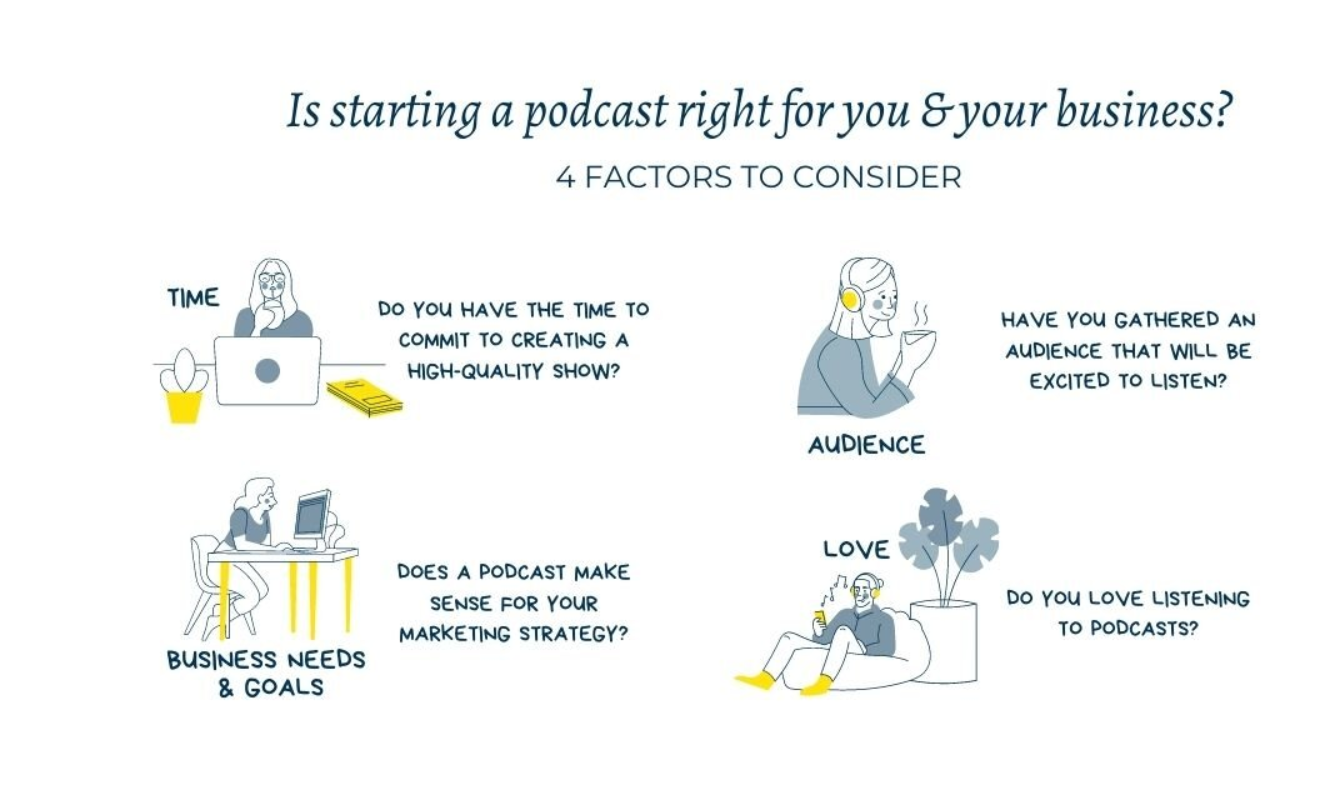
Ref: https://www.yellowhouse.media/articles/how-to-start-podcast-tutorial-checklist
How to Start a Podcast?
The great news is that starting a podcast is easier than you might imagine. Once you get a few key basics in place, you’ll be all set to launch your show.
- Develop Your Podcast Concept
Before jumping into podcasting, set up a solid plan to steer your goals, target audience, and niche. First, nail down your “why”—knowing why you’re starting a podcast keeps you motivated and on track. Whether you’re looking to attract new customers, build a community, or just have fun, understanding your purpose shapes your podcast’s direction.
Finding the perfect niche is key. Dive into your passions and interests, but remember, picking a specific niche helps you create focused content and draw in the right listeners. Think about your expertise, your audience’s needs, and how you can stand out from the crowd.
Design your podcast structure thoughtfully. Choose a format that suits your topic and decide on a length that delivers value. Keep your posting schedule consistent to keep your audience engaged and coming back for more.

- Set Up Your Podcast Gear
- Podcast Microphone
When choosing a microphone for your podcast, consider the following factors:
- Polar Pattern: The polar pattern of a microphone determines where it picks up sound. Cardioid mics are ideal for podcasts as they focus on capturing audio from the front and minimize background noise, ensuring a cleaner recording.
- Dynamic vs. Condenser Mics: Condenser microphones have crisp audio quality but are more sensitive to background sounds, making them great for quiet environments. On the other hand, dynamic mics are less sensitive to soft noises, making them suitable for recording in noisier settings.
- Connection Type: USB microphones are perfect for beginners due to their ease of setup and are great for solo recording. If you’re planning to use multiple mics or need more advanced features, XLR microphones connected via an audio interface offer greater flexibility.
For an excellent choice that covers various needs, we recommend the NearStream AM10X. Its XLR connection and dynamic microphone features make it a versatile option that’s well-suited for podcasting, offering both quality and convenience.
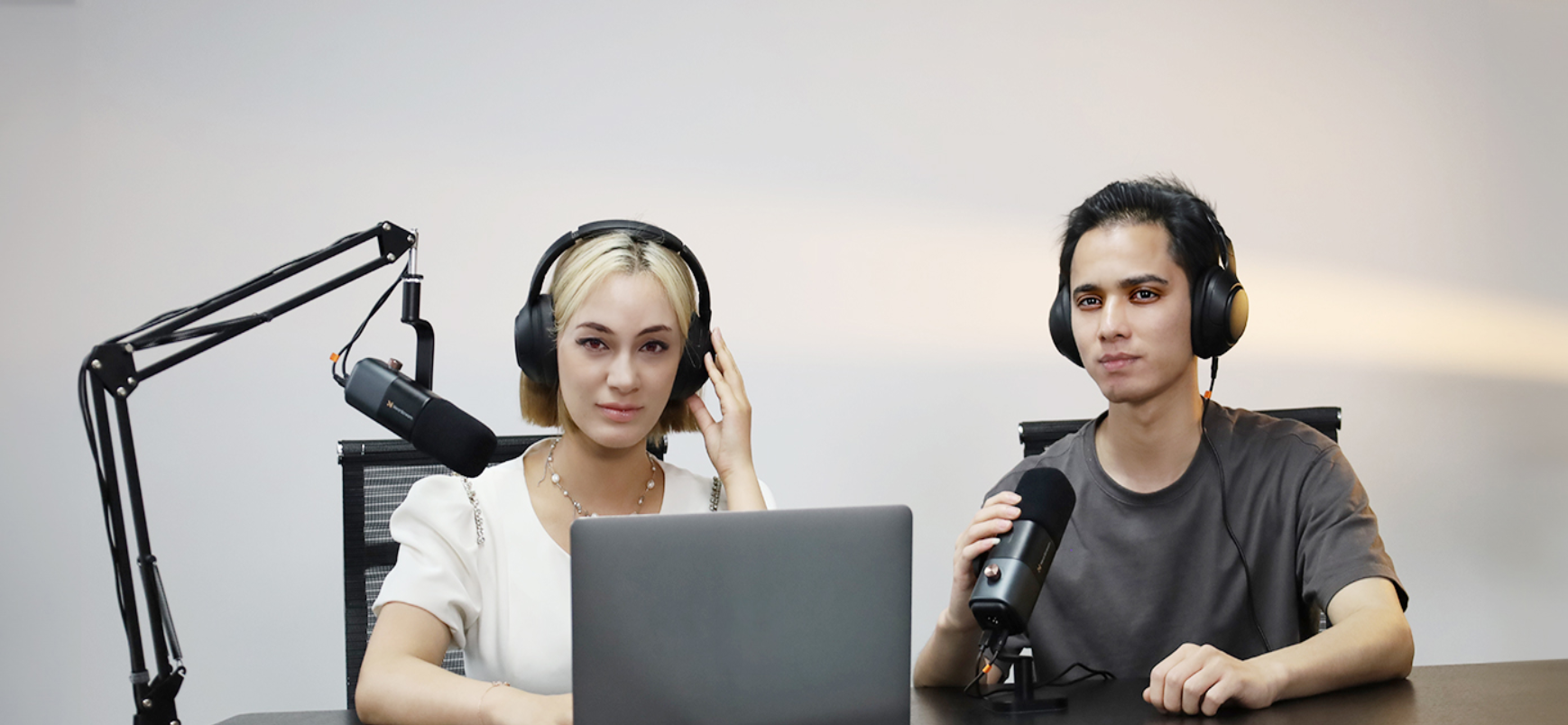
- Podcast Headphone
To catch any audio issues right away, it’s essential to use headphones during recording. They let you hear exactly what your equipment picks up, helping you fix any problems instantly. Headphones also prevent audio bleed or echo by blocking out noise from other devices. Wired headphones are ideal because they have minimal lag and don’t need recharging.
- Laptop
You probably already have a computer or laptop, which is great. Just make sure it’s compatible with your podcasting software. If you’re looking for a reliable option, the MacBook Air is a solid choice.
- Podcast Camera
When recording video podcasts, a quality camera is crucial. It not only provides clear visuals but also adds a professional touch to your content, making it more engaging for viewers.
A high-resolution camera ensures that every detail is captured sharply, creating a more immersive and polished viewing experience. For instance, VM33 offers crystal-clear imaging with Full-HD 1080P streaming and QHD 1440P recording, plus AI noise-canceling to keep your audio pristine.
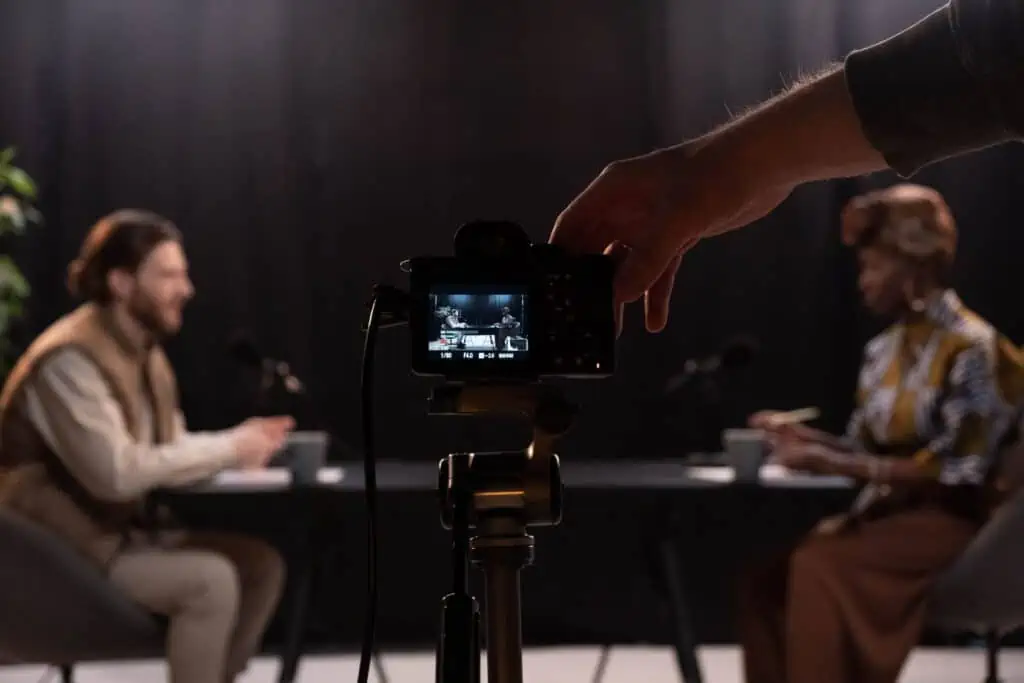
Ref: https://castos.com/best-cameras-for-podcasting/
- Select Recording and Editing Software
With a variety of free and paid podcast software available, it's important to choose based on your specific needs and setup. If you're recording with multiple people in a studio, make sure your software can handle multiple tracks from a single computer. For remote guests, opt for dedicated podcast recording platforms that support local recording, ensuring high-quality audio even if your internet connection isn't perfect.
When it comes to editing, you don’t need the most advanced tools. Many podcast software options combine recording and editing features, so you can keep things simple.
Here are a few popular podcast platforms to consider:
- Anchor – Great for beginners, offering both recording and editing tools with easy distribution.
- Podbean – Offers robust features for both recording and analytics, along with monetization options.
- Spotify for Podcasters – Easy integration with Spotify, providing both recording and analytics tools.
- Audacity – A free, open-source option for editing with plenty of features to get started.
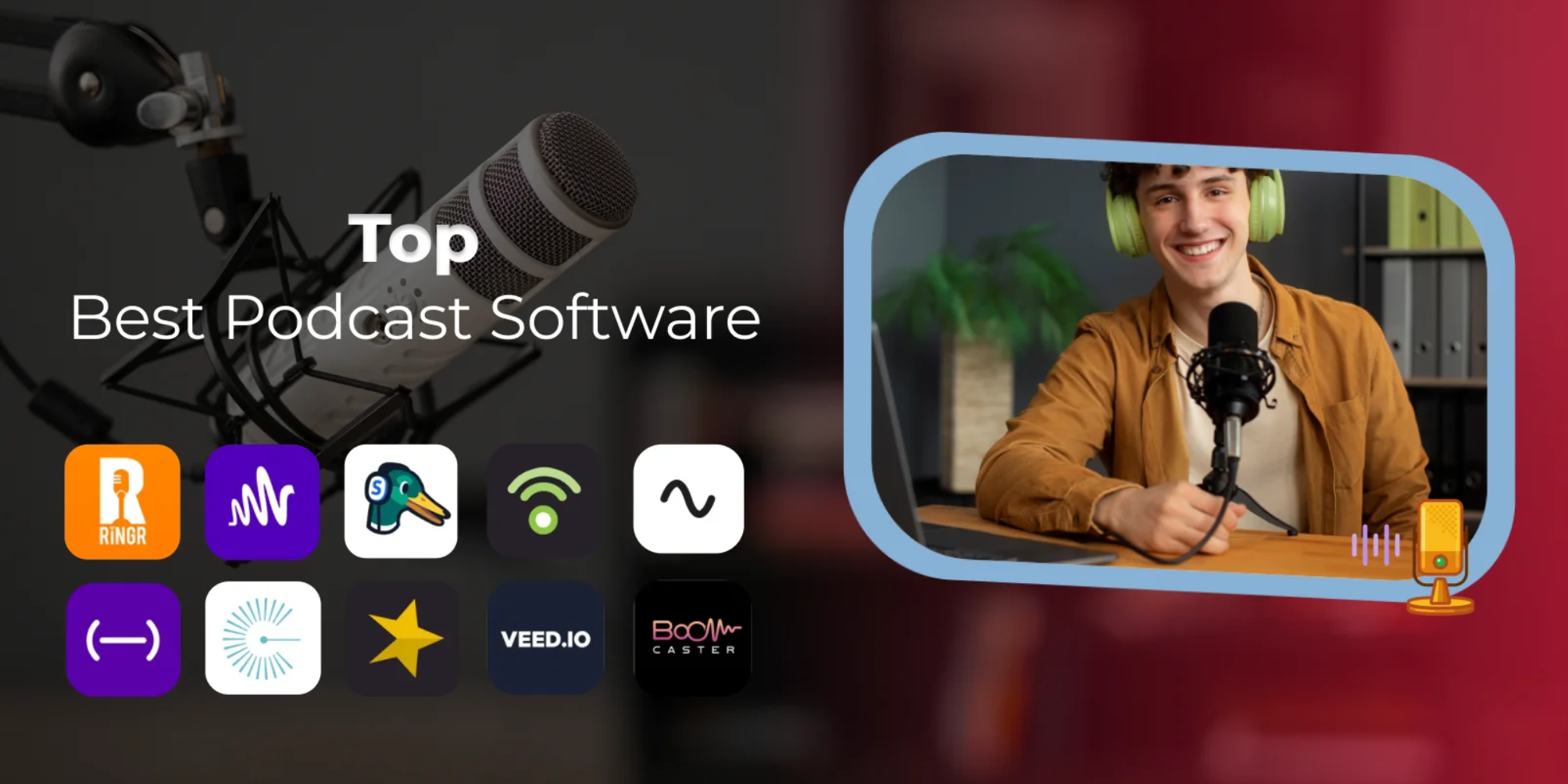
Ref: https://www.enveu.com/blog/best-podcasting-software/
- Plan Your First Episodes
- Organize and Prepare Interviews
To organize and prepare for interviews, start by scheduling them with a clear timeline. Keep a detailed list of your guests and track your communications with them. Thoroughly research each guest to craft personalized questions that will spark engaging conversations.
Additionally, prepare a structured outline of your interview, including a logical flow of questions. Share an estimated length and brief overview with your guests beforehand to set clear expectations. This approach helps manage time effectively and ensures a professional, well-organized interview.
- Draft and Arrange First Episode
In addition to preparing your interview questions, create a podcast outline to keep your episodes on track and avoid tangents. Plan what topics you'll cover in your first few episodes, then dive into the details.
Ideally, aim to have two or three episodes ready before you go live, though the exact number depends on your preferred level of preparedness. While you can start with just one episode, having additional content provides a more comfortable buffer and ensures you're well-prepared.
- Test Your Equipment Setup
Before you hit record, test all your equipment to make sure everything is in working order. Pay attention to key details:
- Mic Positioning: Keep your microphone 2-4 inches away and angled at 45 degrees from your face to minimize plosives and maintain clear audio.
- Frame Setup: Arrange a clean and visually appealing backdrop for your video. Virtual backgrounds can also help keep the focus on you and avoid distractions.
- Use Headphones: Always wear headphones while recording to monitor sound accurately and prevent audio bleed.
- Quiet Recording Space: Choose a quiet environment or soundproof your room to eliminate background noise and ensure high-quality audio.
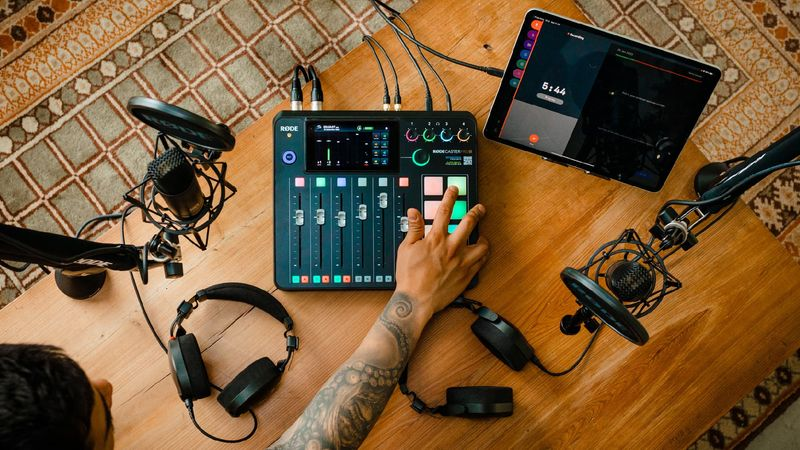
Ref: https://podcasters.spotify.com/resources/learn/grow/podcast-equipment-guide
- Record Your Podcast
Recording yosur podcast is where the magic happens. Start by choosing a quiet, comfortable space with minimal background noise. Before hitting record, outline your main points or script to keep your episode focused and engaging. During recording, speak clearly and with enthusiasm to keep your listeners engaged.
Remember, you can always edit later, so don’t stress about getting everything perfect in one take. Just focus on delivering your content confidently and authentically!
- Edit Your Episodes
Editing your podcast can be simple yet highly effective without needing complex software. Many tools provide automated features to streamline the process. Here’s a straightforward approach to editing:
- Build a Compelling Narrative: Remove unnecessary segments and ensure a seamless, engaging story.
- Enhance with Creativity: Incorporate intros, outros, effects, and music to give your podcast a professional touch.
- Optimize Audio Quality: Eliminate background noise and balance audio levels for clear, consistent sound.
- Incorporate Branding: For video podcasts, customize backgrounds or add your logo for a branded look.
- Merge and Export Efficiently: Save video podcasts as MP4s and audio-only content as WAVs for quality or MP3s to save space.
- Create Engaging Teasers: Slice your podcast into shareable clips for social media to attract new listeners.
- Review and Refine: Listen to your edited podcast thoroughly to catch any remaining issues and ensure a polished final product.
- Promote and Monetize
To transform your podcast into a profitable venture, focus on both promotion and monetization. With over 55% of listeners making purchases from podcast ads, having a solid audience can lead to significant earnings from sponsorships and advertising.
Promote your podcast effectively by investing in SEO to enhance discoverability, crafting compelling social media teasers, and creating a dedicated podcast website. Consider joining networks like True Native Media or Frqncy Media to broaden your reach.
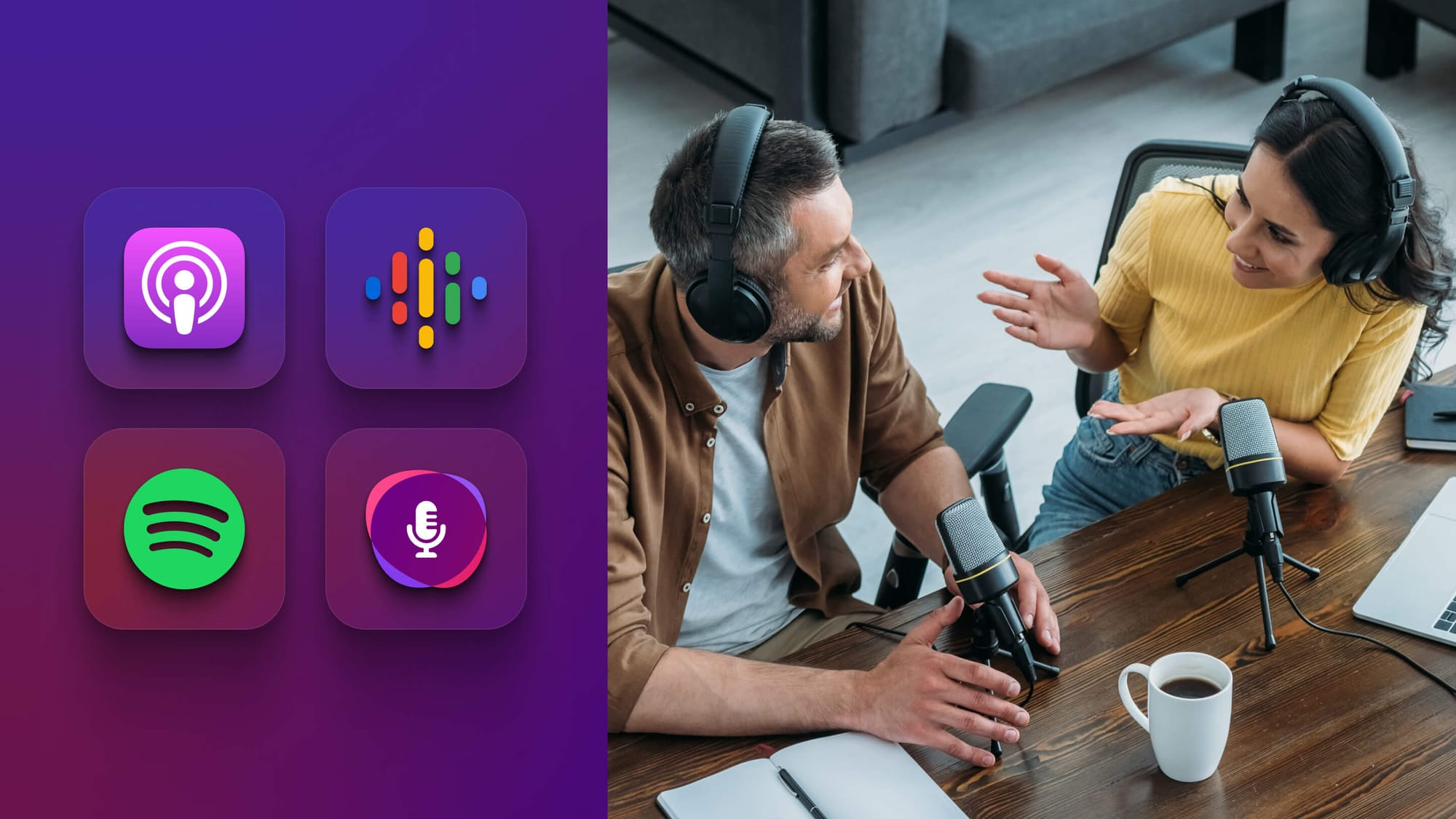
Ref: https://restream.io/blog/how-to-promote-a-podcast/
For monetization, explore options such as securing sponsorships, offering exclusive content for subscribers, encouraging listener donations, selling branded merchandise, and utilizing affiliate marketing. While it may take time, growing your audience will naturally increase your revenue.
Conclusion
Launching your podcast might seem overwhelming at first, but it's an incredibly rewarding venture with endless possibilities. With our tips and insights, you’ll be ready to dive into the world of podcasting confidently. Start sharing your unique voice with the world!
NearStream VM33 - 2K HD Wireless Streaming Camera is an all-in-one wireless live streaming multicam with an optical lens, perfect for streamers seeking a second camera or for recording entire church, wedding, sports, conference, online meetings, or any live events. If you want higher quality, you can choose NearStream VM46 with a 4K resolution.























